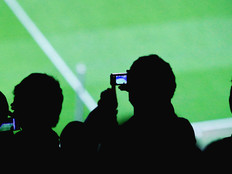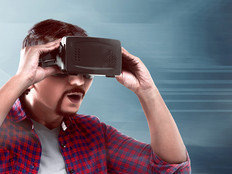Sloan 2017: How Technology Can Help Stadiums Win the War Against the Couch
Stadium operators and sports teams have long considered themselves in competition with fans’ couches. High-definition TV broadcasts and massive screens give fans an opportunity to see games and other events in the comfort of their own homes without having to deal with issues they encounter at stadiums, such as high concessions prices or long lines at restrooms.
But Pete Giorgio, a principal with Deloitte Consulting, thinks the nature of this competition may be overstated. Studies show that fans want to have new and enjoyable experiences, and this trend is even more prominent among young fans, such as millennials. Venues that can deliver these experiences will win the war against the couch.
The key to providing memorable, enjoyable fan experiences is to create a platform that enables fans to have a larger say in how they interact with teams, venues and other fans, said Giorgio, speaking at the MIT Sloan Sports Analytics Conference in Boston on Friday.
The Foundation of the Fan Experience
This technology platform consists of three layers, Giorgio said: infrastructure, services and experiences. At the base is infrastructure, which includes elements such as stadium wireless and wired networks, video displays, beacons and mobile devices.
This layer supports services such as application programming interfaces (APIs), identity management, data services, audio and video feeds, social channels and analytics.
From these services, venues are able to create fan experiences through measures such as team and stadium apps, mobile ticketing and fan loyalty programs.
Many teams and venues have already established these services, Giorgio said; the next step is to empower fans to create their own experiences. This could mean giving fans access to the APIs so they can create their own apps that improve their experience at an event. For example, one app might provide access to information about rest room lines or concession discounts, while another might create an augmented reality system that gives users real-time statistics as they watch a game.
“If you create this platform, you never know what’s going to get created in it,” Giorgio said, likening the approach to the Apple App Store, which allowed developers to create new apps within an open ecosystem and took off in ways that few observers expected.
To create such a platform, Giorgio suggested that venue operators take advantage of moments when they can build from the ground up, such as during the construction of a new stadium or a technology refresh at an existing venue.
The next step is to figure out how to make money from this platform. This is another area where developers can get creative. Among the opportunities Giorgio identified were charging users for access to the platform (or its data) and selling data to third parties.
To learn more about how CDW can help your team make better use of its data, visit CDW.com/sportsandentertainment.









